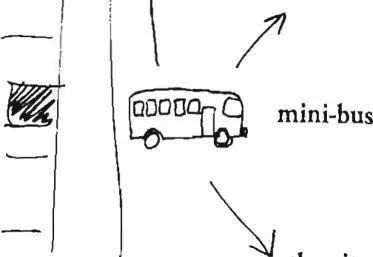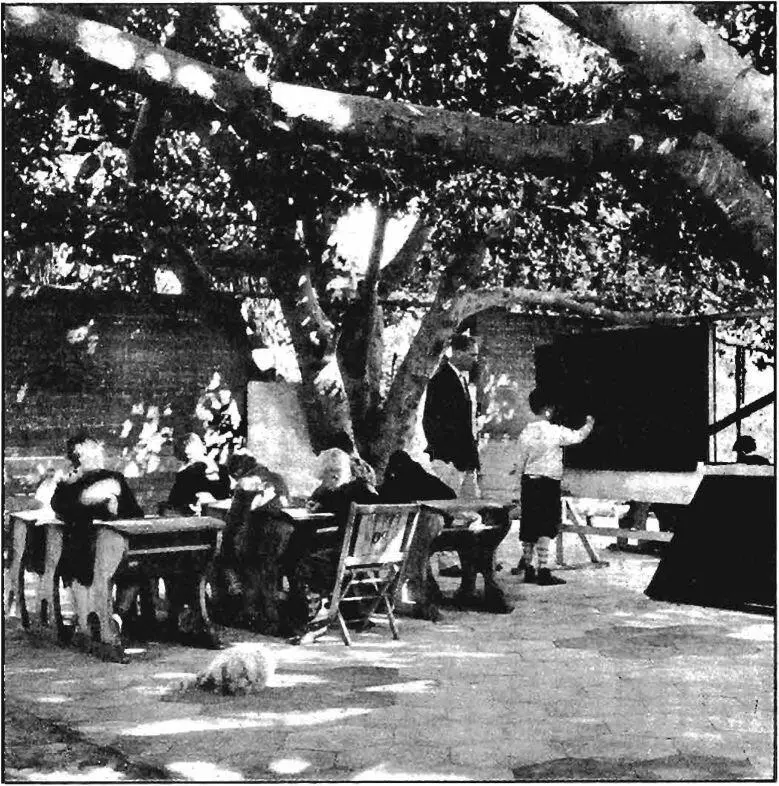Christopher alexander - A pattern language
Здесь есть возможность читать онлайн «Christopher alexander - A pattern language» весь текст электронной книги совершенно бесплатно (целиком полную версию без сокращений). В некоторых случаях можно слушать аудио, скачать через торрент в формате fb2 и присутствует краткое содержание. Жанр: Прочая научная литература, на английском языке. Описание произведения, (предисловие) а так же отзывы посетителей доступны на портале библиотеки ЛибКат.
- Название:A pattern language
- Автор:
- Жанр:
- Год:неизвестен
- ISBN:нет данных
- Рейтинг книги:3 / 5. Голосов: 1
-
Избранное:Добавить в избранное
- Отзывы:
-
Ваша оценка:
- 60
- 1
- 2
- 3
- 4
- 5
A pattern language: краткое содержание, описание и аннотация
Предлагаем к чтению аннотацию, описание, краткое содержание или предисловие (зависит от того, что написал сам автор книги «A pattern language»). Если вы не нашли необходимую информацию о книге — напишите в комментариях, мы постараемся отыскать её.
A pattern language — читать онлайн бесплатно полную книгу (весь текст) целиком
Ниже представлен текст книги, разбитый по страницам. Система сохранения места последней прочитанной страницы, позволяет с удобством читать онлайн бесплатно книгу «A pattern language», без необходимости каждый раз заново искать на чём Вы остановились. Поставьте закладку, и сможете в любой момент перейти на страницу, на которой закончили чтение.
Интервал:
Закладка:
I would like to make clear that in contrasting our own procedures with those of the public schools, I am not trying to criticize the teachers who find themselves embattled in the institutional setting and overburdened to the point of madness. . . . My point is precisely that the intimacy and small scale of our school should be imitated widely, since these things alone make possible the human contact capable of curing the diseases we have been naming with such frequency for the last ten years.
Now that “mini-schools” are being discussed (they have been proposed most cogently by Paul Goodman and Dr. Elliott Shapiro), it’s worth saying that that’s exactly what we were: the first of the mini-schools. . . .
By eliminating the expenses of the centralized school, Dennison found he was able to reduce the student-teacher ratio by a factor of three!
For the twenty-three children there were three full-time teachers, one part-time (myself), and several others who came at scheduled periods for singing, dancing, and music.
Public school teachers, with their 30 to 1 ratios, will be aware that we have entered the realm of sheer luxury. One of the things that will bear repeating, however, is that this luxury was purchased at a cost per child a good bit lower than that of the public system, for the similarity of operating costs does not reflect the huge capital investment of the public schools or the great difference in the quality of service. Not that our families paid tuition (hardly anyone did) ; I mean simply that our money was not drained away by vast administrative costs, bookkeeping, elaborate buildings, maintenance, enforcement personnel, and vandalism.
Charles Rusch, director of Moboc, Mobil Open Classroom, has made the same discovery:
... by eliminating the building and the salaries of all those persons who do not directly work with the children, the student/teacher ratio can be reduced from something like 35/1 to 10/1. In this one stroke many of the most pressing public school problems can be eliminated at no extra cost to the school or school district. Rusch, “Moboc: The Mobile Open Classroom,” p. 7.
Therefore:
Instead of building large public schools for children 7 to 12, set up tiny independent schools, one school at a time. Keep the school small, so that its overheads are low and
85 SHOPFRONT SCHOOLS
a teacher-student ratio of 1:10 can be maintained. Locate it in the public part of the community, with a shopfront and three or four rooms.
 |
| the city•5* ❖ |
I t-
shopfront
Place the school on a pedestrian street— pedestrian street(I oo) ; near other functioning workshops— self-governing workshops and offices(80) and within walking distance of a park— accessible green(6 o). Make it an identifiable part of the building it is part of— building complex(95); and give it a good strong opening at the front, so that it is connected with the street— opening to the street(165). . . .
We begin with that fart of the language which defines a town or a community. These fatterns can never be “designed” or “built” in one fell swoof—but fatient fiece-meal growth , designed in such a way that every individual act is always helfing to create or generate these larger global fatterns , will, slowly and surely , over the years )make a community that has these global fatterns in it.
❖
The first 94 patterns deal with the large-scale structure of the environment: the growth of town and country, the layout of roads and paths, the relationship between work and family, the formation of suitable public institutions for a neighborhood, the kinds of public space required to support these institutions.
We believe that the patterns presented in this section can be implemented best by piecemeal processes, where each project built or each planning decision made is sanctioned by the community according as it does or does not help to form certain large-scale patterns. We do not believe that these large fatterns , which give so much structure to a town or of a neighborhood , can be created by centralized authority , or by laws , or by master flans. We believe instead that they can emerge gradually and organically, almost of their own accord, if every act of building, large or small, takes on the responsibility for gradually shaping its small corner of the world to make tthese larger patterns appear there.
In the next few pages we shall describe a planning
| 86 children’s home* |
|---|
 |
426
. . . within each neighborhood there are hundreds of children. The children, especially the young ones, are helped in their relation to the world by the patterns children in the city(57) and connected play(68). However, these very general provisions in the form of public land need to be supported by some kind of communal place, where they can stay without their parents for a few hours, or a few days, according to necessity. This pattern is a part of the network of learning(18) for the youngest children.
The task of looking after little children is a much deeper and more fundamental social issue than the phrases “babysitting” and “child care” suggest.
It is true, of course, that in a society where most children are in the care of single adults or couples, the mothers and fathers must be able to have their children looked after while they work or when they want to meet their friends. This is what child care and baby-sitting are for. It is, if you like, the adult’s view of the situation.
But the fact is that the children themselves have unsatisfied needs which are equally pressing. They need access to other adults beyond their parents, and access to other children; and the situations in which they meet these other adults and other children need to be highly complex, subtle, full of the same complexities and intensities as family life—not merely “schools” and “kindergarten” and “playgrounds.”
When we look at the children’s needs, and at the needs of the adults, we realize that what is needed is a new institution in the neighborhood: a children's home —a place where children can be safe and well looked after, night and day, with the full range of opportunities and social activities that can introduce them, fully, to society.
To a certain extent, these needs were absorbed in the large, extended families of the past. In such a family, the variety of
TOWNS
adults and children of other ages had a positive value for the children. It brought them into contact with more human situations, allowed them to work out their needs with a variety of people, not j ust two.
Читать дальшеИнтервал:
Закладка:
Похожие книги на «A pattern language»
Представляем Вашему вниманию похожие книги на «A pattern language» списком для выбора. Мы отобрали схожую по названию и смыслу литературу в надежде предоставить читателям больше вариантов отыскать новые, интересные, ещё непрочитанные произведения.
Обсуждение, отзывы о книге «A pattern language» и просто собственные мнения читателей. Оставьте ваши комментарии, напишите, что Вы думаете о произведении, его смысле или главных героях. Укажите что конкретно понравилось, а что нет, и почему Вы так считаете.












